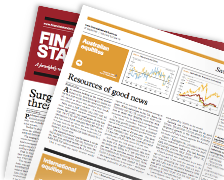Blue bondsBY MATT LAWTON, TONGAI KUNORUBWE | VOLUME 15, ISSUE 4Increasing degradation of inland water and ocean ecosystems have created an urgent need for solutions. Blue bonds are becoming an innovative means to finance marine projects as well as for water resource management. Blue financing is an emerging area of sustainable finance, with growing interest from investors and issuers alike. A subset of green financing, blue bonds and loans provide funds for ocean and water resource management projects, while green bonds finance a broader set of environmental projects. To contextualise the cost of ocean decline in economic terms, the United Nations (UN) Environment Programme Finance Initiative estimates that ocean-linked sectors contribute US$2.5 trillion in value to the global economy and support over 30 million jobs. Additionally, the ocean provides a vital source of protein to 3 billion people, and its ecosystems are significant mitigators of climate change. Access to safe, clean, and accessible water is in short supply for billions of people. Shortages are exacerbating agricultural challenges and hindering humanitarian efforts. Further, oceans generate oxygen, absorb excess heat and carbon emissions produced by human activity, and support vital ecosystems. Yet they are under threat from climate change, pollution, overfishing, and habitat damage, among a host of other pressures. Blue bonds in sustainable finance As shown in Figure 1 on the next page, the sustainable bond market comprises green, blue, social, sustainability, and sustainability-linked bonds. The sustainable bond market has experienced rapid growth in recent years, both in terms of size, surpassing US$1 trillion annually, and the breadth of impact themes. Despite this, it remains quite small compared with traditional debt markets. Moreover, the UN has stated that sustainable projects have been underfunded, estimating that a US$5-7 trillion annual investment is needed to meet the Sustainable Development Goals (SDGs), underscoring the urgency and need for additional investment. Blue bonds could help accelerate the growth of the sustainable bond market while facilitating capital flow to address this funding gap, and recent industry guidance can help investors direct capital toward projects aligned with the SDGs. Asset managers, in their role of enabling investors to deploy capital at scale, can act as a catalyst for positive change in the sustainable development and preservation of finite shared water resources. Get articles like this delivered to your email - Sign up for the free weekly newsletter More Articles |
Latest News
Super for housing 'economically reckless': SMC
AustralianSuper announces insurance changes
ART reduces admin fees for high balance accounts
Qantas Super boosts ag assets by $200m
Cover Story

The super, super fund
CHIEF EXECUTIVE OFFICER
AWARE SUPER




 Read full article
Read full article



















